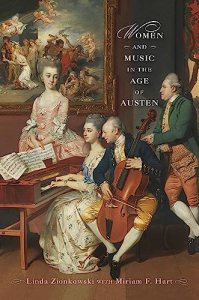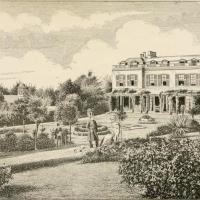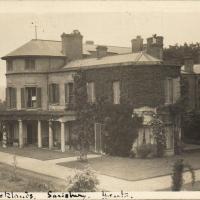Isadore Albee’s Civil War Diaries
Whether Isadore Albee gets her own blog or not, I want to talk about her – and will do so here.
A very recent purchase, the Civil War diaries of Isadore Albee (her father spelled his name Allbee), is EXACTLY the project I have long sought. Past purchases have tended to forward my main research, into the Smith and Gosling family — presented online as “Two Teens in the Time of Austen” because Emma Smith married James Edward Austen (later Austen Leigh) AND Mary married Emma’s eldest brother Sir Charles Joshua Smith, baronet.
Isadore – I tend to think of her as ‘Dora‘ (which may or may NOT be what she called herself; I’m still hoping to find that out) – was a “known object” when I purchased the diaries. The seller’s ad had boasted a plethora of characterful excerpts, which caught my eye and fired my imagination. Dora wrote of her everyday life during a period, 1862 through 1871, important to American history, a period of change and national turmoil. That “era” called to me, as it does to many.
Dora is a female diarist. Typically, men‘s war diaries have been preserved for posterity, so Dora’s are a welcome breath of fresh air. Dora is young – she records her 21st birthday in May, 1862. It’s recorded as a day of “no preasants” (sic) and given over to the first effects of “scarlettina.” Dora’s typical “luck”….
The BIG inducement, compounding “female diarist” and “Civil War era” into a trifecta: Dora lived in Springfield, VERMONT. My home state!
I’d *LOVE* to direct you to a new blog. But I may simply delete what I began on WordPress. I liked the blogging platform, as it was; I despise what it is now.
I haven’t yet made up my mind if Dora will somewhat “share” space with my Two Teens or not. It’s a departure in so many ways, AND YET somewhat related – in terms of being a research project.

After fourteen years of researching English diaries and letters, finding related biographies and related artwork, visiting estates now turned into schools or cut into condominiums, there are “challenges” in working on a set of diaries from Vermont. The Smiths & Goslings were important people, wealthy people; they owned estates; they lived in London during “the season.” Traces of their faded tracks pop up in newspapers. The popular literature of their day, monthly items like Gentleman’s Magazine and the Annual Review, are go-to places for a wealth of information on their (wide) circle of English landed gentry.
For Dora‘s diaries, I’m down to a small local newspaper (not digitized) and the U.S. Census. Dora’s friends and presumed neighbors are sometimes only mentioned by first name; it’s my assumption that they are young ladies, like herself.
Mary and Emma, on the other hand, always cite people in a VERY formal manner. Young friends (and even relatives) always are designated by first and last name. Only their own immediate family members rated a first-name-only. Finding information on the many, many servants of their world has been tougher; they, too, could be first name OR last name only.
To confuse the average reader, though, those next-door neighbors were interrelated even before Mary’s marriage to Charles in 1826.
Emma, for instance, differentiates between her sister Charlotte and Mary’s sister Charlotte Gosling. Family also had two Carolines (Caroline Mary Craven Austen and Caroline Wiggett [later Caroline Workman]). In later years, there were not only Mrs. (Augusta) Smith and her eldest daughter, Augusta; but Mary had a daughter named Augusta. Emma had a daughter named Augusta. Fanny had a daughter named Augusta….
You get my drift…. A LOT of duplicate names. Even marriages brought in new but similarly-named family members. Emma’s sister Fanny changed her name from Smith to Seymour a few months before their new sister-in-law, Frances, changed her name from Seymour to Smith. To confuse things, Frances seemed to have been called ‘Pam,’ at least in her girlhood, by her family; though the Smiths always referred to her as Frances. Whereas Fanny was never known as Frances, except in a very youthful letter. Fanny’s husband, the Rev. Richard Seymour, referred to his cousin (and eventual sister-in-law) as “Dora K.” because he also had a sister Dora. Cousin Dora Knighton was the daughter of Sir William Knighton – an important personage known to the Prince of Wales / Prince Regent / King George IV. Lady Knighton’s first name was Dorothea, thus the sprouting of other ‘Doras’. Though, of course, not for my ‘Dora’ Albee.
I’ve already begun a family tree for Dora: her only brother died when a toddler, and she talks most about her elder sister, Jane, and younger sister, Sophia. I have yet to figure out if “Bessie” in 1862 is “Lizzie” in 1870, and whether both refer to her sister Elizabeth. The family tree includes eldest sister Gratia (who married in 1850 and moved to Iowa a decade or more ago) and one who married only in 1860, Ellen.
But I’m used to sorting out people. In “Two Teens,” there are THREE Emma Smiths! Besides my diarist, Emma Smith (Emma Austen), there is: “Aunt Emma” (who never married), Mrs. Smith’s youngest sister, and great aunt Emma Smith (later Lady Dunsany), a sister to grandfather Joshua Smith. Lady Dunsany married late in life, and, from what I’ve found, was as loquacious as Miss Bates (in the Jane Austen novel, Emma).
My prime interest in the Civil War diaries is Isadore Albee, herself.

















